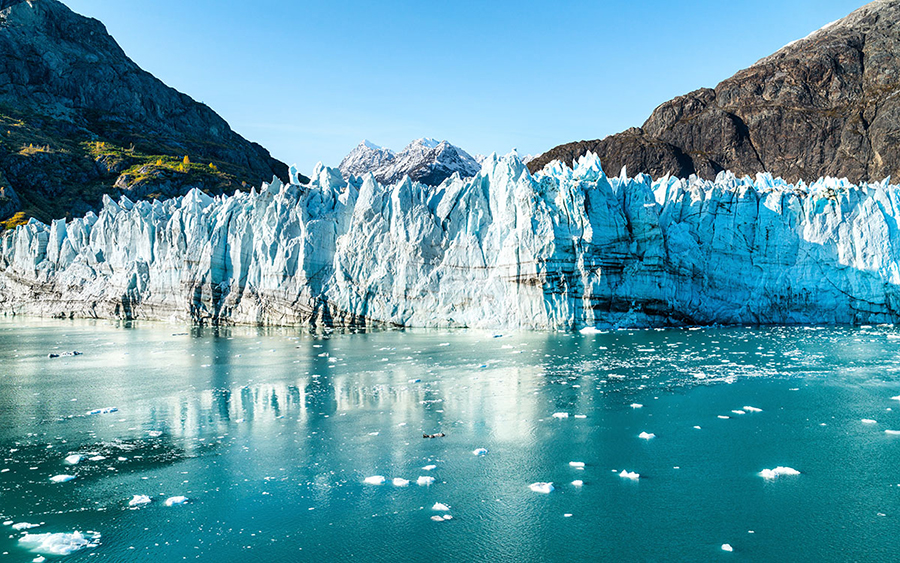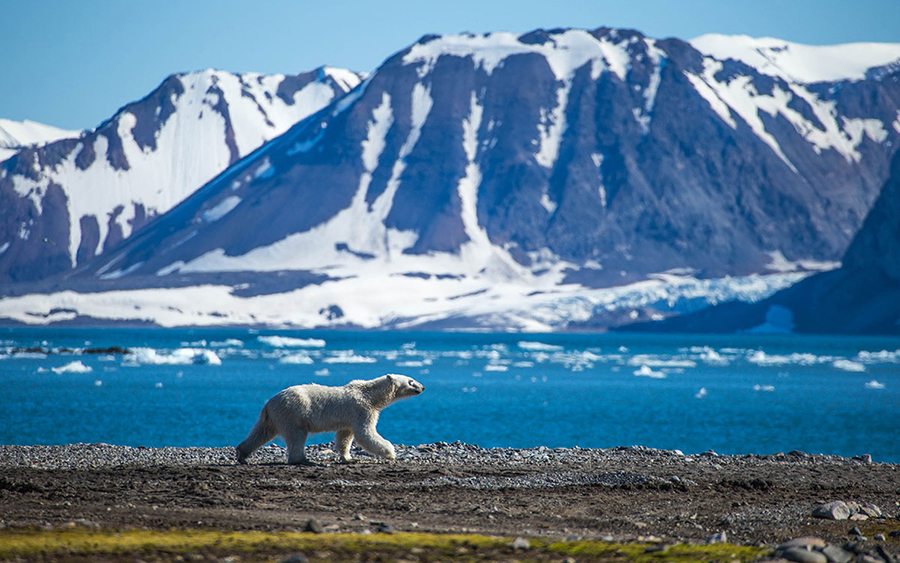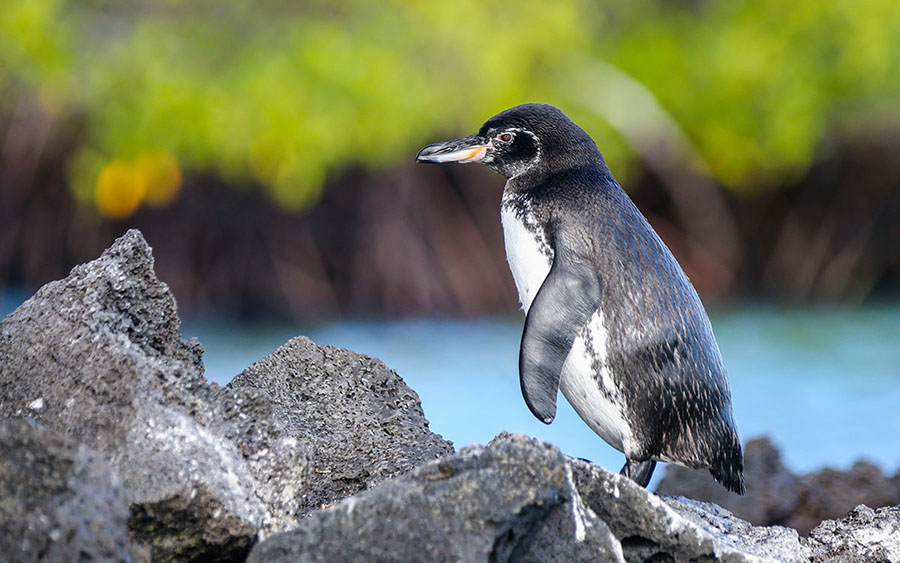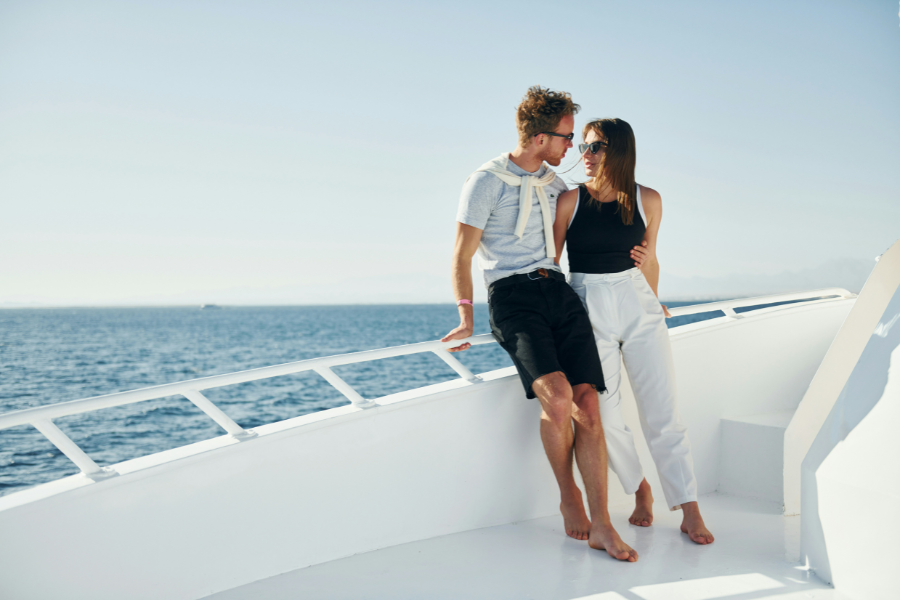
All about sustainable cruising
The tourism industry as a whole is evolving and adapting to accommodate our changing perception of the Earth and how we travel around it. Travel is evolving – for the better. Many cruise lines are beginning to look towards a more sustainable future; environmentally, economically, and culturally. While this might not be a priority for some, we at Panache Cruises are interested in how this might change the industry, and how major luxury cruise lines will approach and adapt to this new consumer demand.
Gone are the days of it being acceptable to dispose of waste out at sea (yes, some really used to do this!), interact with locals and wildlife in an abrupt manner, and contribute to light pollution in small local ports.

Nowadays, many ultra-luxury cruise lines are designing ships which are smaller, innocuous, elegant, and generally less disruptive for the local area in which they drop anchor. Shore excursions are becoming more supportive of local businesses and the conservation of cultural sites. Seabourn, for example, is famously one of the biggest cruise lines to have partnered extensively with UNESCO World Heritage, offering nearly 500 tour operations which include substantial contributions towards the conservation of select destinations. (for more info click here)
Environmental sustainability, however, is the key to keeping the cruise industry going in the long-term. We are living in a generation of increased environmental awareness and responsibility; there are more global environmental regulations than ever before, and industries are evolving and innovating within this field. With this approach in mind, we have investigated the sustainable practices of some of our most popular cruise lines and been pleasantly surprised to find that they are already ahead of the game.
A recent study discovered that each day a cruise ship can generate as much as:
- 30,000 gallons of sewage
- 255,000 gallons of wastewater from showers, sinks, laundries, and dishwashers, as well as hazardous chemicals found in industrial cleaning products
- 7,000 gallons of oily bilge water
- exhaust emissions equivalent to approximately 12,000 cars
For this blog post, I have selected two luxury cruise lines to use as case studies. I have researched their best practices and sustainability manifestos, which you can find on their websites, or via Cruise Critic. All other cruise lines we work with at Panache Cruises are dedicated to lowering their environmental impact, something we are passionate about and believe should be encouraged within the industry. We recommend you check out their sustainability measures and future plans when researching your upcoming cruise!
Crystal Cruises
Crystal’s motto when it comes to their sustainability approach is ‘Crystal Clean’. They are committed to taking the necessary steps to ensure that new additions to their fleet are more sustainably developed, with their new Endeavour ship featuring world-class sonar technology which enables the detection of marine life up to 1,000m ahead, allowing safer navigation and leaving little to no trace.
The rest of the Crystal fleet are working towards sustainability via three methods in particular:
- water conservation;
- waste mitigation; and
- eco-friendly partnerships
Guests are encouraged to reduce their use of laundry services on board their voyage; a simple and effective method which saves up to 650,000 gallons of water per year on Crystal ships alone. On the Crystal Endeavour, non-toxic paint is used on the underside of the ship to prevent contamination upon contact with marine life. The toilets are fitted to minimize the water needed to flush, and the newly adapted biological treatment system ensures that waste is cleaned and discharged safely; the ship is proudly one of the most eco-conscious expedition vessels to date.

Single-use plastic has been heavily reduced on board the Crystal fleet, with alternatives becoming more readily available. For example, disposable shower caps are now made from biodegradable corn, LED lighting is now used throughout, and Crystal’s new partnership with sustainable toiletry brand Caudalie helps fund reforestation projects around the world.
Further partnerships now play a crucial role in Crystal’s sustainable approach to cruising. The ‘You Care, We Care’ initiative encourages guests to participate in voluntourism at different locations throughout their cruise. This allows guests (and crew) to visit and work with a variety of organisations which are environmentally, economically, and socially rewarding, such as tree planting excursions in New Zealand and Iceland, or activities with the elderly at the Granitos de Paz Foundation in Cartagena, Colombia.
The Crystal X ORCA OceanWatch programme, launched in 2019, is a leading conservation organisation aiming to engage travellers to learn about and protect marine life. This alliance began when Cruise Conservationists from ORCA were welcomed aboard the Crystal Symphony in Alaska and led daily talks from the observation deck, guiding passengers to recognise animal behaviours along their voyage.
In addition, Crystal has partnered with the ‘Clean the World’ scheme, which recycles and transforms partially used toiletries and distributes them to impoverished corners of the world; so far, over 11,000 bottled amenities have been recycled into over 47,000 bars of soap and distributed to those in need.
Hurtigruten
Exploring some of the most incredible wilderness on Earth, Hurtigruten recognises their responsibility to ensure that their operations are undertaken in the most sustainable way possible, whilst providing their guests with the adventure of a lifetime. Hurtigruten aims to educate and engage passengers in the importance of understanding the consequences of climate change, our planet’s ecosystems, and indigenous populations, which they can witness first-hand while on expeditions.
Boasting a “footprint we are proud of”, Hurtigruten is leading the charge with building the first ever hybrid-electric powered expedition ships, and preventing degradation by mass tourism by decreasing their passenger capacity. Phenomenally, Hurtigruten was the first major travel company to completely remove all single-use plastics on board their fleet, and is well on its way to becoming the world’s first plastic-free travel company.

Making use of some of the world’s leading technological advances, Hurtigruten vessels produce their own fresh water through an innovative onboard desalination and purification system. They also use the heat from their engines to power hot water systems, saving the same amount of power as around 6,700 households would require for a whole year.
Another sustainability issue Hurtigruten has shed light on is food waste. They serve over 4 million meals each year, and with a newfound partnership with the EAT Foundation, have pledged to reduce food waste by a whopping 30% by the end of 2021.
In select destinations, Hurtigruten also encourage their passengers to take part in beach clean-ups as part of their shore excursions, further spreading awareness and proving just how simple some methods of sustainable cruising are.
Other cruise lines which are improving their sustainable practices
- Royal Caribbean - committed to installing advanced wastewater treatment equipment across its entire fleet.
- Amadeus – the only river cruise liner in Europe to hold the Green Globe certification.
- Ecoventura – specialist Galapagos cruise line employing highly qualified naturalists and conservationists to educate and engage passengers on board.
- Star Clippers – luxury yachts aiming to use sailing power alone 25% of the time.
Want to experience this? Give the Panache Cruises team a call on 0161 513 8200 and they'd be happy to help!




